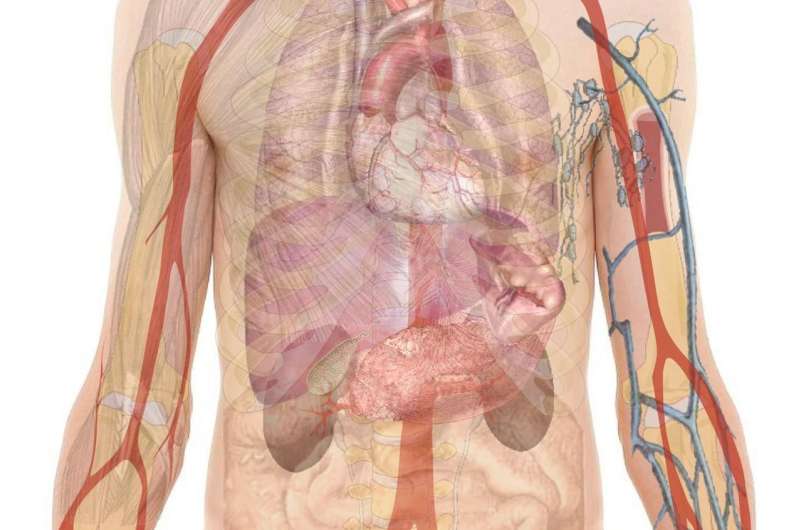This article has been reviewed according to Science X's editorial process and policies. Editors have highlighted the following attributes while ensuring the content's credibility:
fact-checked
trusted source
proofread
A spinal muscle's size and shape is linked to body fat, according to new research

A new study carried out by researchers at Concordia's School of Health provides a new way of looking at the spine. Now published in Frontiers in Musculoskeletal Disorders, the research reveals the way one spinal muscle's size, shape, and function relate to body composition.
The lumbar multifidus (LM) is a long muscle running along the spine, from the neck to the base. The muscle plays a vital role in spine stability. Impairments to the LM are often associated with chronic low back and lower leg pain.
The researchers recruited 134 male and female Concordia athletes who played soccer, hockey, rugby, and football (men only) on the university's varsity teams. Each athlete underwent two scanning procedures. The first procedure, an ultrasound, measured LM characteristics such as size, thickness at rest and at contraction, and echo intensity. The second procedure was a dual-energy X-ray absorptiometry (DEXA).
This procedure measures body composition metrics such as bone mass, lean mass and fat mass, and is far more accurate than the body mass index (BMI).
Statistical analyses were used to assess the relationship between LM characteristics and body composition, as well as possible differences between sports the athletes played. The analyses were also separated by sex.
"We wanted to have a precise assessment of body composition, well beyond the data that BMI provides, to assess whether body composition would correlate to muscle's morphology," says Maryse Fortin. Fortin is the paper's corresponding author and an assistant professor in the Department of Health, Kinesiology and Applied Physiology.
"Once we had that, we were able to make meaningful comparisons between sports."
Differences across sports and sex
The researchers found interesting differences between the male and female athletes. Female hockey players, for instance, were found to have larger LMs than their rugby- and soccer-playing counterparts. In males, football players had the largest LMs, but hockey players had the smallest.
And while the female athletes generally had higher levels of body fat than the male ones, as was expected, ultrasound readings revealed a strong positive relationship between percentage body fat and echo intensity (EI). EI is a type of measurement that provides an indication of how much fat is within a muscle. This was found to be the case in both males and females.
Further, those with higher percentage body fat had a lower ability to contract their multifidus.
"Our findings suggest that having more body fat leads to more fat within the muscle, which may play a negative role in activating that muscle," Fortin explains.
"Combining body composition with a functional assessment on how well you can contract that muscle using ultrasound was a key component of this study."
"LM characteristics have previously been associated with low back pain and lower limb injury," adds Meaghan Anstruther, MSc 23, the paper's lead author. "Thus, understanding the connections between LM and body composition in athletes is a crucial next step to developing a well-rounded intervention plan for athletes who may be at higher risk of injury."
Anstruther now works as an athletic therapist for the Concordia Stingers. Amanda Rizk and Stephane Frenette also contributed to the paper.
A new look at a known problem
While the study was performed on high-level elite athletes, Fortin says it would be worthy to confirm our findings in non-athlete populations.
"It is intuitive to think that body composition will affect muscle quality. But until we were able to find a way to look for it, we had not been able to confirm that fact."
"We know the multifidus is very important to spine stability. Previous studies did find associations between the multifidus muscle's morphology and its functionality with the risk of low back pain and lower injury. Our findings underline the importance of keeping body composition as healthy as possible."
More information: Meagan Anstruther et al, Lumbar multifidus characteristics and body composition in university level athletes, Frontiers in Musculoskeletal Disorders (2023). DOI: 10.3389/fmscd.2023.1235114





















